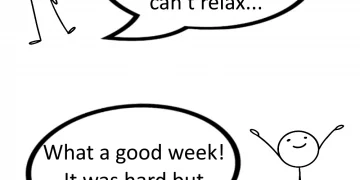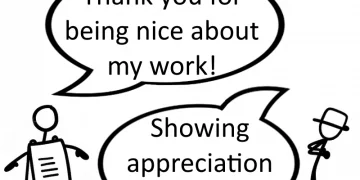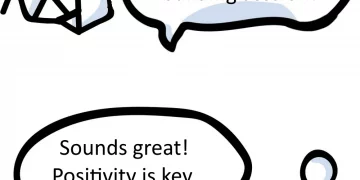
What Makes People Resilient?
There are many factors that cause trauma in individuals and communities. Some people cope better than others when faced with adversity.
Our lives unfold in complicated, unpredictable, and diverse ways. Big and small traumatic things happen to us. Some people are able to overcome these obstacles. Others struggle and cannot bounce back. These people may suffer from mental conditions such as post-traumatic stress disorder (PTSD).
If you’re a corporate manager, it’s important to be aware of employees’ mental health, whether it is a major trauma outside the work environment or microaggressions that affect the whole team. One way your company can protect employees is by offering training and mentoring on resilience. Our Resilience Training teaches the participants how to develop a support structure and a plan to deal with stressful situations.
Trauma
Trauma manifests itself in many disguises, from daily stress to life-changing disasters. Any overwhelming situation ignites a stress-response within our brain. If left unattended, it affects our emotional, physical, and social well-being.
Every one of us has daily micro-stresses. We can be involved in conflicts at work, or we may feel like we don’t fit in. We might not get along with a colleague, or we might be a victim of bullying or racial and gender discrimination. We need to learn the skills of resilience to manage these situations better.
Financial worries, car accidents, or losing loved ones are traumatic events. These events get more exposure and often more sympathy, and most of us can deal with these issues after some time.
On the other hand, a few people experience overwhelming trauma that changes lives or affects entire communities. These incidents make the headlines, and usually organisations offer emotional or financial help.
The Three E’s
Psychologists view trauma in three parts, known as the three E’s.
-
- The event and its impact
- The experience that the person went through
- The effect of the incident
Dr Bruce Perry emphasises that all forms of trauma are the same. It is how we deal with them that is different. The magnitude of the event is not proportional to the degree of trauma experienced.
Resilience
Resilience means elasticity or malleability. So resilient people have more flexible stress-response systems.
Resilience is more complicated than the single characteristic of adapting well after adversity. Family, support groups, the environment, or culture all assist in the resilience process. The number of systems that a person can draw from determines their resilience. It is not a case of she is a resilient person, or she is not a resilient person.
Psychologists refer to resilience as a trait, a process, or a capacity.
A trait implies that some inherent factor is present. Research indicates that the genetic component of resilience is small. It is not only present in some people. Everyone can be resilient.
Some psychologists prefer to refer to resilience as a process. After a traumatic event, many people feel drained and empty. Some never manage to move out of this state. Others make a conscious decision to be resilient and recover.
The journey starts with a choice to recover from the traumatic situation. It takes time and courage to pull in all support systems that enable normal functioning. When people have made it through the fog, they begin to enjoy life again. They may even enjoy personal growth.
It is possible to measure the capacity of a person’s resilience. These measurements show the quantity and quality of progress over time.
The literature suggests that resilience is a tangible skill within our control. It is a choice that we can make to move forward. The skills to move forward are taught in various learning institutions.
What Makes People Resilient?
When we experience trauma, we do not function for a period of time. The degree of the dysfunction and the time of the disfunction is unpredictable.
Many of us manage to pick ourselves up and go forward. We lean on our support systems and make a conscious decision to recover.
Others cannot move forward and one of the reasons is that they have a history of loss or neglect. The components in their resilience toolbox are broken or missing. These components work and fit together like the pieces in a jigsaw puzzle.
Biological Footprint
Scientists still know very little about the genetics of resilience. They are in the early stages of researching the gene Neuropeptide Y (NPY). When this gene is present in low levels, humans seem more vulnerable to mental conditions like PTSD.
Our environment, upbringing, and life experiences are also part of our biological footprint. These factors determine how we behave after adversity. We learn different skills, and we know how to use those skills to cope. People have communicated these coping skills and knowledge for generations.
Parenting
Many children experience severe challenges. If these challenges continue into adulthood, they compromise resilience. These children are likely to develop PTSD in adulthood. Children who have not experienced adversity are more resilient.
Children shielded by overprotective parents will also not become resilient adults. Children need the freedom to experiment, explore, and experience minor discomforts.
Social Support
We all need to connect, and in times of adversity, our support systems are essential. Our family, community, or friends protect us in times of emotional distress. When we share the burden of adversity, we feel safe and protected. People with limited social support are vulnerable when facing trauma.
Prisoners of war had no support group. They used other prisoners as their social support. They invented ‘tapping’ codes between prison cells to give each other hope. They remained united and loyal to each other until the end. This was their form of resilience.
Spiritual Beliefs
Religion and spirituality act as vehicles in understanding random and tragic situations. Many non-religious or non-spiritual people would ask the question— why me? Spiritual people ask — why not me?
When things have meaning and explanation, healing can start. Spirituality helps people feel calm, find meaning, purpose, and hope.
Culture
Culture defines similar ideas and rituals within communities, genders, races, and religions. People who believe the same thing or have similar backgrounds.
Most of us have customs we perform at certain times of the year or for definite occasions. There is a rigid sequence to these routines. They all are symbolic and give us purpose and meaning.
Most of the time we are uncertain of the custom’s purpose. It is something we do — part of our culture. It calms negative emotions. Praying, for example, has different movements and gestures for different religions. Many of these actions involve rhythmic or repetitive actions that have been known to soothe and heal.
Some communities use their culture to heal. In Southern Africa, there is a culture known as ubuntu. Grandparents, aunts, and uncles are responsible for every child in the family. They help with finance, mentoring and education.
A Healthy Lifestyle
Exercise, sleep, hydration, and nutrition all improve reasoning and mood. They reduce anxiety and increase positive thoughts.
Concentrating On The Present
Mindfulness teaches people to focus on gratitude and live in the present. It teaches people to examine every thought with purpose, hope, and reason. Mindfulness deals with the here and now, allowing focus on future goals.
Ethics And Values
Resilient people have a conscience and a set of values that defines them as a person. They channel these values into making good decisions and actions. People who don’t have values often turn to substance abuse as a way of alleviating pain.
Altruism
Altruism is a way of assisting others less fortunate than yourself. Self-worth improves, followed by happiness and accomplishment.
Building Resilience
The Covid-19 pandemic brought uncertainty and trauma to individuals and communities. Many companies closed, retrenched staff, or at best reassessed and honed their strategies.
In the future, managers need to be cognisant of employees’ potential trauma. They should be caring and offer cultural and psychological protection.
Personal development courses should be an essential part of the corporate culture. People need tools to remain positive and resilient.
If employees know the exact status of the situation in the company, they can plan. When employees feel vulnerable, they speculate, worry, or spread rumours. Transparency and honesty build trust. When employees know their future and the required changes, they feel safe.
Without transparency and truth in difficult times, people panic. Their stress responses activate, and they experience trauma. They lose faith in one another, in their leaders, and in their social connections. It is a form of trauma, and it is a dangerous place to be.
Conclusion
Traumatic events affect people in different ways. No single trauma is more damaging than any other trauma. All trauma is serious.
Trauma is overcome by resilience. Chances of recovery are high when the victim is healthy and has strong social support. Belief in a superior being or culture can help the victim to focus and understand. Trained thought processes that deal only with the present or the future are valuable. Gratitude and altruism move the victim from a place of self-pity to a place of self-worth.
Resilient people use all these attributes in their toolbox. They never give up, and often they achieve things that they never thought possible.


